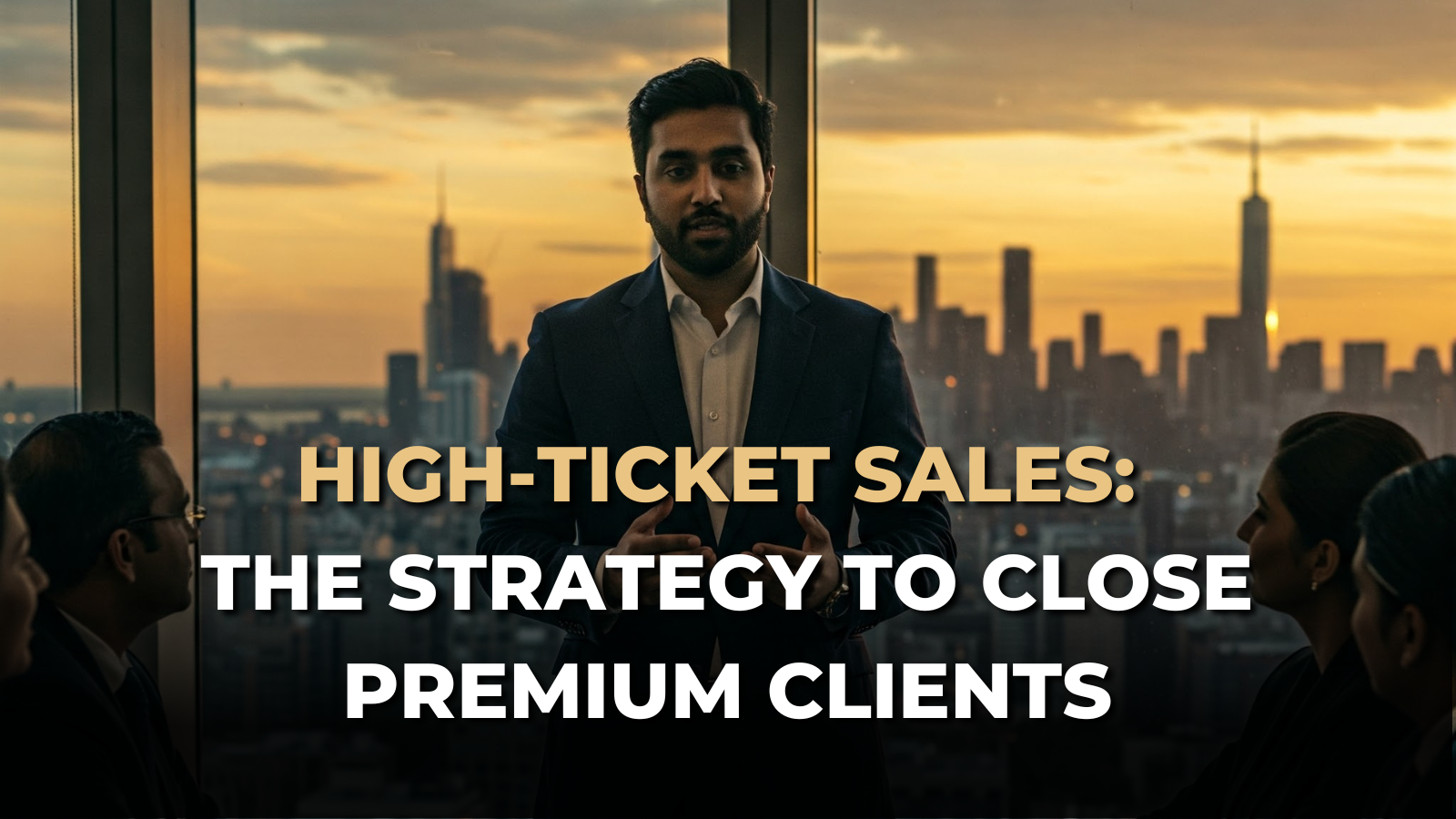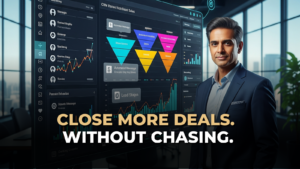Most entrepreneurs struggle to close high-ticket deals because they approach it wrong.
They waste time chasing leads, handling objections, and trying to convince. But premium clients don’t need convincing.
Think about it—when did a luxury brand last beg you to buy?
Never.
Because high-ticket sales aren’t about persuasion. They’re about positioning.
If you’re constantly trying to “sell” a high-value product or service, you’re losing. Premium clients don’t buy based on pressure. They buy based on authority, exclusivity, and value.
If you want to close high-ticket sales consistently without chasing leads or lowering your prices, there’s only one strategy that matters.
It’s the same strategy I’ve used to generate millions in high-ticket sales— the same approach industry leaders, top consultants, and high-end service providers use to attract premium clients effortlessly.
Table of Contents
- High-Ticket Sales: The Only Strategy You Need to Close Premium Clients
- What Are High Ticket Sales? Understanding Premium Clients
- Definition and Examples of High-Ticket Sales
- Examples of High-Ticket Products & Services
- How High-Ticket Sales Differ from Low-Ticket Sales
- Why High-Ticket Sales Are the Ultimate Business Model
- Why High-Ticket Sales Mean More Profit, Less Effort
- Attracting Clients Who Invest Instead of Just Buy
- Positioning Yourself as the Premium Option
- The Only Strategy That Matters: Frame Control
- Step 1: Set the Tone from the First Interaction
- Step 2: Price Anchoring – Make Clients See Value Differently
- Step 3: Pre-Sell So There’s No “Selling” on the Call
- Step 4: Close Without Resistance
- Takeaways & Next Steps
What Are High Ticket Sales? Understanding Premium Clients
High-ticket sales refer to selling high-value products or services that require a significant investment from the customer. Unlike low-ticket items, which rely on high volume and impulse buys, high-ticket deals focus on exclusivity, premium pricing, and delivering exceptional value.
If you’re chasing clients, you’re playing the wrong game.
When you understand how high-ticket sales work, you’ll stop convincing people to buy and start attracting premium clients who see your offer as the only logical choice.
Definition and Examples of High-Ticket Sales
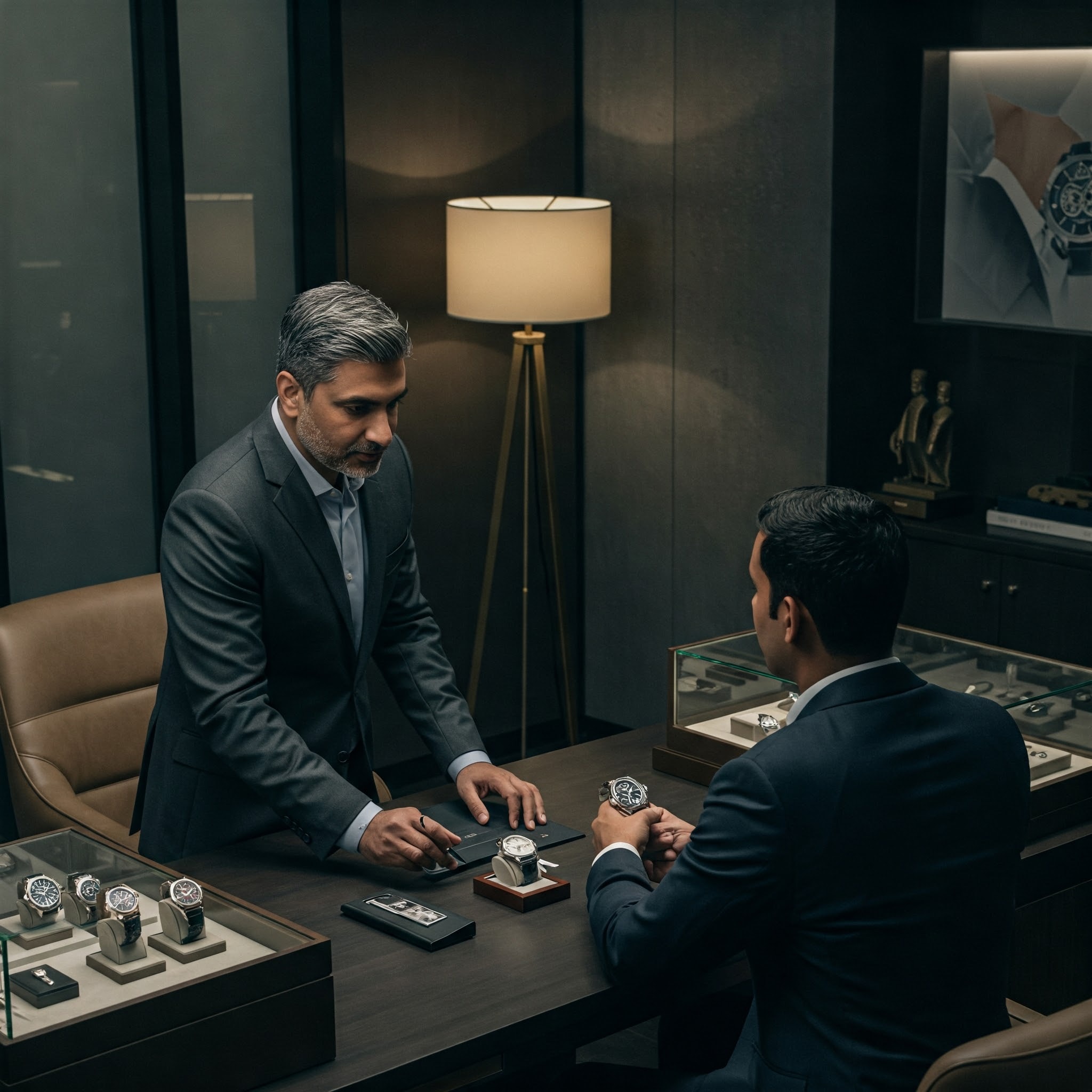
High-ticket sales refer to the process of selling high-value products or services that require a significant investment from the customer. These products or services are typically priced at a premium and are often customized to meet the specific needs of the customer. High-ticket sales are characterized by a longer sales cycle, a more personalized selling approach, and a higher level of customer service. They often involve multiple decision-makers and require a deeper understanding of the customer’s needs and pain points.
Examples of high-ticket sales include:
- Enterprise Software Solutions: Companies like Salesforce and Oracle offer high-ticket software solutions that require a significant investment from the customer.
- Luxury Real Estate: High-end properties, such as multimillion-dollar homes, require a more personalized and consultative sales approach.
- Consulting Services: Global consulting firms like McKinsey & Company use the high-ticket sales strategy for their business advisory services.
- High-End Medical Equipment: The sale of state-of-the-art MRI machines, which can cost between $1 million to $3 million, is another example of high-ticket sales.
These examples illustrate that high-ticket sales are not just transactions; they are premium solutions designed for a specific, high-value audience.
Examples of High-Ticket Products & Services
High-ticket sales exist across multiple industries, from luxury goods to consulting and beyond. High ticket items, such as luxury cars, private jets, and enterprise software solutions, offer considerable value to buyers. Here are some examples of high-ticket products that command premium prices:
- Coaching & Consulting – Business coaching, executive consulting, and elite mastermind groups.
- Luxury Real Estate – Multi-million-dollar homes, penthouses, and commercial properties.
- High-End E-Commerce – Custom jewelry, designer watches, and exclusive collectibles.
- Enterprise Software & SaaS – High-value software solutions for corporations and businesses.
- Private Equity & Investments – Hedge funds, alternative investments, and premium financial services.
What do they have in common?
They aren’t just transactions. They are premium solutions designed for a specific, high-value audience.
How High-Ticket Sales Differ from Low-Ticket Sales
Most entrepreneurs fail because they treat high-ticket sales the same as low-ticket sales.
Big mistake.
Selling low-ticket items is all about volume—mass marketing, quick sales cycles, and a broad target audience. But high-ticket sales require a different approach.
|
Low-Ticket Sales |
High-Ticket Sales |
| Focus on volume (many buyers) | Focus on value (fewer, high-value clients) |
| Impulse-driven purchases | Relationship-driven decisions |
| Low price point, low margins | High price point, higher profit margins |
| Fast transactions | Longer sales cycle, bigger commitment |
| Target audience: general consumers | Target audience: qualified, high-ticket buyers |
If you’re marketing your high-ticket offer like a low-ticket product, you’ll attract the wrong audience.
High-ticket clients don’t buy based on price—they buy based on results, authority, and trust.
The question is: How do you position yourself to attract them effortlessly?
1. Why High-Ticket Sales Are the Ultimate Business Model
Most entrepreneurs focus on low-ticket because they believe it’s easier. They chase volume, thinking more customers mean more money.
Wrong.
More customers don’t mean more profit. More qualified customers do.
This is why high-ticket is the smartest way to scale—fewer sales, higher profit margins, and premium clients who are ready to invest in a high ticket product.
Why High-Ticket Sales Mean More Profit, Less Effort
If you sell low-ticket items, you need thousands of buyers just to hit six or seven figures.
If you structure a high ticket sale effectively, you only need a handful of deals to reach the same revenue.
Example:
- Selling a $50 product means you need 2,000+ sales to make $100,000.
- Selling a $10,000 service means you only need 10 clients to make $100,000.
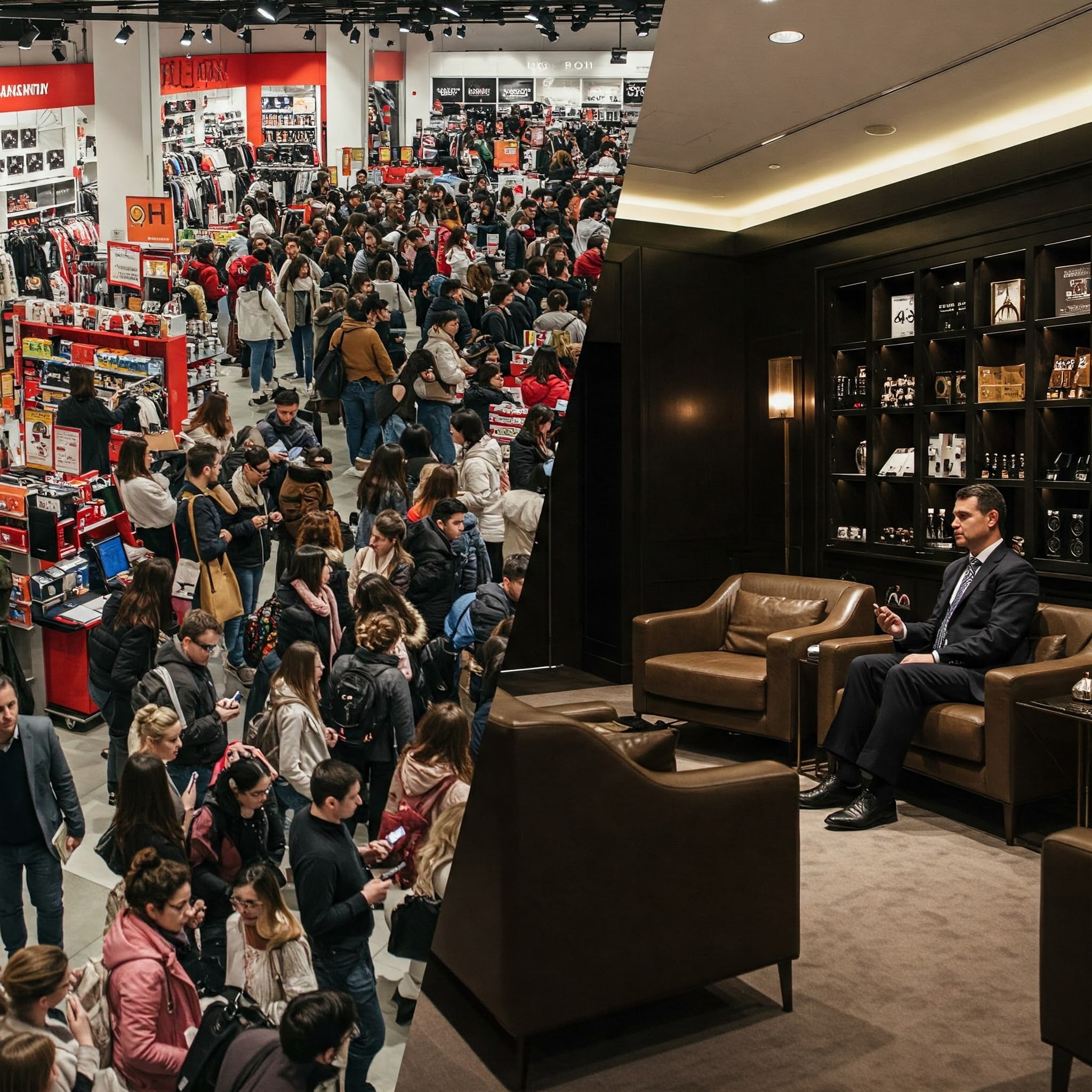
Attracting Clients Who Invest Instead of Just Buy
The biggest mindset shift in mastering high-ticket sales?
Stop “convincing” people to buy. Start attracting the right buyers.
High-ticket prospects don’t buy because of price—they buy because of perceived value, expertise, and exclusivity.
If someone hesitates over your premium price, they aren’t your client. Move on.
Premium clients:
- Are willing to spend money when they see the value.
- Are not looking for the cheapest option—they want the best solution.
- Are easier to close because they have more buying power.
Positioning Yourself as the Premium Option
If you want high-ticket buyers, you must become the premium choice.
High-ticket brands don’t compete on price—they dominate by positioning themselves as the only logical choice.
High ticket sales strategies, such as those used by companies like Tesla and Paddle, emphasize the need for sophisticated sales funnel optimization to effectively sell high-value products and services.
Here’s how you do it:
Own your niche. If you’re a generalist, you compete on price. If you’re a specialist, you set the price.
Create exclusivity. Not everyone qualifies for your offer. Only premium clients get access.
Deliver transformational results. High-ticket clients pay for outcomes, not just a service. Show them why your offer is the best solution.
This is why high-ticket sales win.
Fewer clients. Higher profit margins. Zero chasing.
The only question is: Are you ready to stop playing small?
Let’s move to the one strategy that makes all the difference—Frame Control.
3. The Only Strategy That Matters: Frame Control
High-ticket sales are won or lost before the client even makes a decision.
The moment you let a prospect control the conversation, ask for discounts, or question your expertise—you’ve lost.
The highest-paid high-ticket closers, consultants, and business owners all master one thing:
Frame Control.
What Is Frame Control?
In any sales conversation, someone controls the frame—either you or the prospect.
- If the client questions your price, they control the frame.
- If they ask for discounts, they control the frame.
- If they make you “prove” your value, they control the frame.
If you’re explaining, you’re losing.
Control the frame from the start.
Because high-ticket buyers don’t chase—they choose.
Why You Must Control the Conversation
Most entrepreneurs position themselves as the “seller”—and that’s why they struggle.
The second a client senses that you need the sale more than they need your offer, you lose all power.
Here’s what happens when you fail to control the frame:
Prospects treat you like a commodity instead of an authority.
You get price objections because they don’t see the value.
You waste time chasing unqualified leads instead of filtering for high-ticket clients.

Here’s what happens when you own the frame:
Prospects qualify themselves before they ever get on a call.
Clients respect your time and follow your process.
High-value deals close faster, with zero resistance.
The difference? How you control the frame.
Mistakes Entrepreneurs Make That Kill Sales
Most business owners destroy their own positioning without realizing it.
If you’re doing any of these, you’re killing your high-ticket sales:
Convincing instead of filtering → If you’re trying to “convince” people to buy, you’re talking to the wrong clients. Premium clients don’t need convincing.
Justifying your price → When you defend your pricing, you put the client in control. Instead, price anchoring makes them feel like your offer is a steal, even at a premium.
Handling objections reactively → If you’re answering objections on the call, you’ve already lost. High-ticket closers eliminate objections before they even happen.
If you want more high-ticket sales, you must stop playing defense and start owning the conversation.
How to Take Back Control in Any Sales Interaction
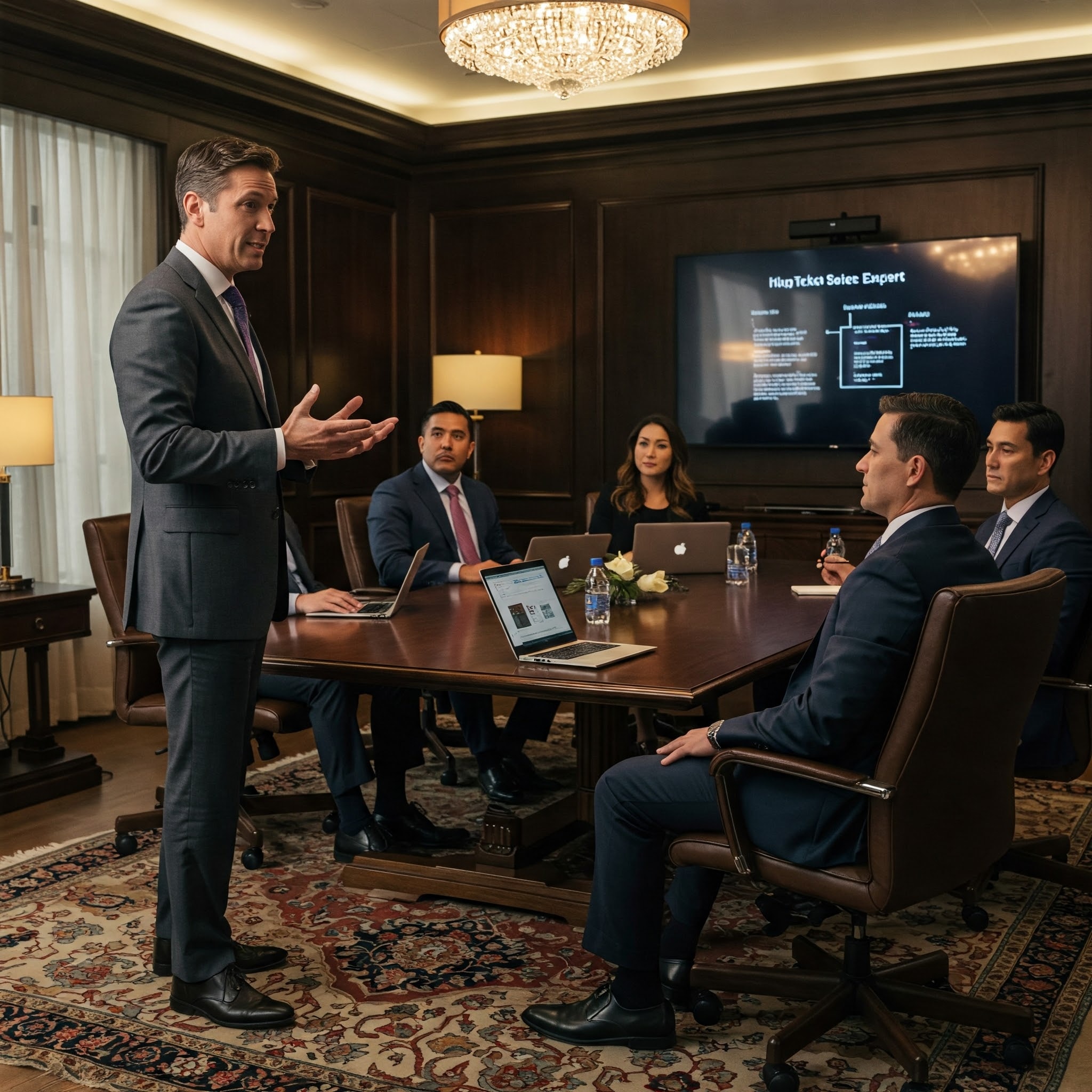
Remote high ticket closing involves closing sales using the right techniques. This role requires exceptional communication and rapport-building skills.
Here’s how to own the frame and make high-ticket clients chase you:
Set the rules before the call. Let prospects know they are applying for your time—not the other way around.
Position yourself as the prize. High-value clients want access to the best. You’re not competing with others—you are the standard.
Use exclusivity & scarcity. People want what they can’t easily get. Your offer is for qualified clients only.
Don’t play by their rules. If a prospect starts asking for discounts or trying to negotiate—you disqualify them.
High-ticket sales aren’t about chasing. They’re about filtering for the right buyer.
By controlling the frame, you set the standard, command authority, and close high-value deals effortlessly.
Now, let’s break down how to set the tone from the first interaction to make clients respect your offer before they even speak to you.
Step 1: Set the Tone from the First Interaction

The first few moments of a client interaction determine everything.
Either they see you as the prize—or they see you as just another option.
Most entrepreneurs fail at high-ticket sales because they enter conversations seeking approval. They try to prove themselves, justify their price, and win over the prospect.
Big mistake.
High-ticket clients don’t want to be sold. They want to qualify for the best option.
If you don’t set the tone from the first interaction, you’ll lose control of the frame and kill the sale before it even starts.
Why Clients Must Qualify for You, Not the Other Way Around
Most sales reps and entrepreneurs go into a sales conversation thinking:
“How do I convince this person to buy?”
High-ticket closers think:
“How do I decide if this person qualifies for my offer?”
Massive difference.
When a prospect feels like they’re in control, they’ll start testing you.
- They’ll question your price instead of respecting it.
- They’ll negotiate instead of committing.
- They’ll treat you like a commodity instead of an expert.
High-value clients don’t want a vendor—they want a trusted authority.
Your Offer Isn’t for Everyone—And That’s a Good Thing

The fastest way to lose premium positioning is to make your offer seem available to everyone.
The harder something is to get, the more valuable it becomes.
Think about luxury brands like Rolex, Ferrari, and private banking services. They don’t chase customers—they make clients earn access.
Here’s how you do it in high-ticket sales:
Use an application-based model → Let prospects know that only qualified buyers get in.
Limit spots → High-value deals don’t scale like low-ticket products. The fewer the spots, the higher the demand.
Set clear qualification standards → If a prospect doesn’t meet them, they don’t move forward. Period.
By making your offer exclusive, you immediately filter out the wrong clients and attract serious buyers.
How to Build Exclusivity Into Your Sales Process

If a client feels like they have to work to earn your time, they’ll respect it more.
Here’s how to create exclusivity from the first interaction:
Make prospects apply before they can work with you.
- Use a brief questionnaire that filters out low-ticket buyers and time-wasters.
Let them know your time is limited.
- Example: “We only take on 5 new high-ticket clients per month. Let’s see if you qualify.”
Be comfortable disqualifying people.
- Example: “This program isn’t for everyone, and that’s intentional.”
When a client feels like they must qualify for your time, they’ll value your offer more—and stop questioning your price.
Real-World Examples of Frame Control in High-Ticket Sales
Example #1: Luxury Real Estate
In high-end real estate, buyers don’t dictate the terms. Instead, they compete for limited, premium properties.
Example #2: Private Consulting Firms
Elite consultants don’t sell their time to just anyone. They require a pre-qualification process that ensures only serious businesses get access.
Example #3: High-Ticket Coaching Programs
The best coaching and mastermind programs don’t take everyone. They position themselves as invite-only, filtering for serious, high-value clients.
By applying this positioning to your business, you immediately shift the power dynamic and create an environment where high-ticket buyers respect your offer.
Now that you’ve set the tone, the next step is mastering price anchoring—so your offer feels like a steal, even at a premium.
Step 2: Price Anchoring – Make Clients See Value Differently
Most entrepreneurs underprice their offers.
They fear that charging more will scare clients away—so they keep their prices low and “affordable.”
Big mistake.
High-ticket clients don’t buy based on price—they buy based on value perception.
If you want to close high-ticket deals effortlessly, you need to shift how your prospects see your price.
This is where price anchoring comes in.
Why Most Entrepreneurs Underprice Their Offers (And How to Fix It)
Most entrepreneurs think:
“If I lower my price, more people will buy.”
But low-ticket pricing attracts low-quality clients—the ones who:
Negotiate every little detail.
Don’t respect your time.
Question your expertise instead of trusting it.
Premium clients don’t buy the cheapest option. They buy the best option.
Instead of lowering your price, increase your perceived value.
How Premium Clients Think About Price (Hint: It’s Not About Cost)
A high-ticket prospect doesn’t ask:
“How much does this cost?”
They ask:
“Is this worth the investment?”
Your job? Make the answer a clear YES.
This is where price anchoring changes the game.
The Three Pillars of Price Anchoring
Price anchoring reframes your offer, so clients see the value first and the price second.
Do this right, and your offer feels like a steal—even at $10K, $25K, or $100K.
1. Show the Cost of NOT Working With You

What’s the REAL price of their problem staying unsolved?
If a business loses $500K per year due to bad sales strategy, your $15K coaching offer isn’t expensive—it’s a no-brainer investment.
Example:
- If a real estate investor stands to lose $1M on a bad deal, a $25K consulting fee is nothing.
- If a CEO wastes 5+ hours per week on inefficient systems, a $10K automation program pays for itself.
Make clients realize that not hiring you is the expensive mistake.
2. Stack the Value—Don’t Sell the Service, Sell the Transformation
Stop selling “coaching,” “consulting,” or “programs.”
People don’t buy services—they buy outcomes.
Example:
“$10K for 3 months of coaching?” → (Sounds expensive)
“$10K to 10X your closing rate in 90 days?” → (Sounds like a steal)
Break down your offer into stacked value:
Premium Support (access to you and your expertise)
Tools & Systems (proven frameworks that guarantee results)
Exclusive Access (only high-ticket clients get this level of insight)
Make the value so clear and undeniable that the price feels like an afterthought.
3. Compare to an Expensive Alternative

Make your premium price look cheap by comparison.
Example:
- Private Business Coaching at $100K per year vs. Your Consulting Program at $15K? Steal.
- Hiring a Full-Time Sales Director at $150K vs. Your Sales Training at $10K? Steal.
- Buying a Franchise for $250K vs. Your Business Accelerator at $20K? Steal.
When done correctly, your high-ticket pricing feels like an incredible deal.
Examples of Effective Price Anchoring in Action
Example #1: High-Ticket Coaching
- Instead of: “3 months of coaching for $10K”
- Say: “Turn your business into a $1M powerhouse in 90 days—guaranteed.”
Example #2: Luxury Real Estate
- Instead of: “This penthouse is $2M.”
- Say: “This penthouse is an exclusive investment opportunity in a market where prices are rising 15% per year.”
Example #3: High-End Marketing Services
- Instead of: “Our agency charges $8K per month.”
- Say: “For the price of one junior marketer, you get a team of experts who drive $500K+ in revenue for our clients every quarter.”
Price anchoring makes clients see your offer as the best investment they could make.
Price Is a Mindset Game
If YOU believe your offer is too expensive, your prospects will too.
If YOU position your offer as an elite, high-value solution, your prospects will see it that way.
You don’t lower your price to close more deals. You increase your positioning to attract better buyers.
Now that we’ve covered price anchoring, let’s move on to Step 3: Pre-Selling—so there’s no “selling” on the call.
Step 3: Pre-Sell So There’s No “Selling” on the Call
Amateurs handle objections on sales calls.
Experts eliminate them beforehand.
Most entrepreneurs make the mistake of waiting until the sales call to address concerns. They think if they just “pitch it right,” the client will be convinced.
Wrong.
By the time a prospect gets on a call with you, they should already be pre-sold on your offer. The conversation should be a confirmation, not a persuasion.
If you want to close high-ticket deals effortlessly, your marketing must do 90% of the selling before the call even happens.
Why Pre-Selling Eliminates Resistance
If a prospect is still questioning your price, doubting your expertise, or asking for proof on the call…
You’ve already lost.
High-ticket buyers don’t make impulse purchases. They need to feel certainty before committing.
If you don’t build trust before the call, you’ll waste time handling unnecessary objections instead of closing deals.
Here’s how the best high-ticket closers pre-sell before the call: They use content to educate & establish authority. They position their offer as an “invite-only” opportunity. They frame the call as a final step—not a sales pitch, ensuring trust and repeat business.
How to Use Content to Pre-Sell Before the Call
Your content should do the heavy lifting so that by the time a prospect talks to you, they already want in.
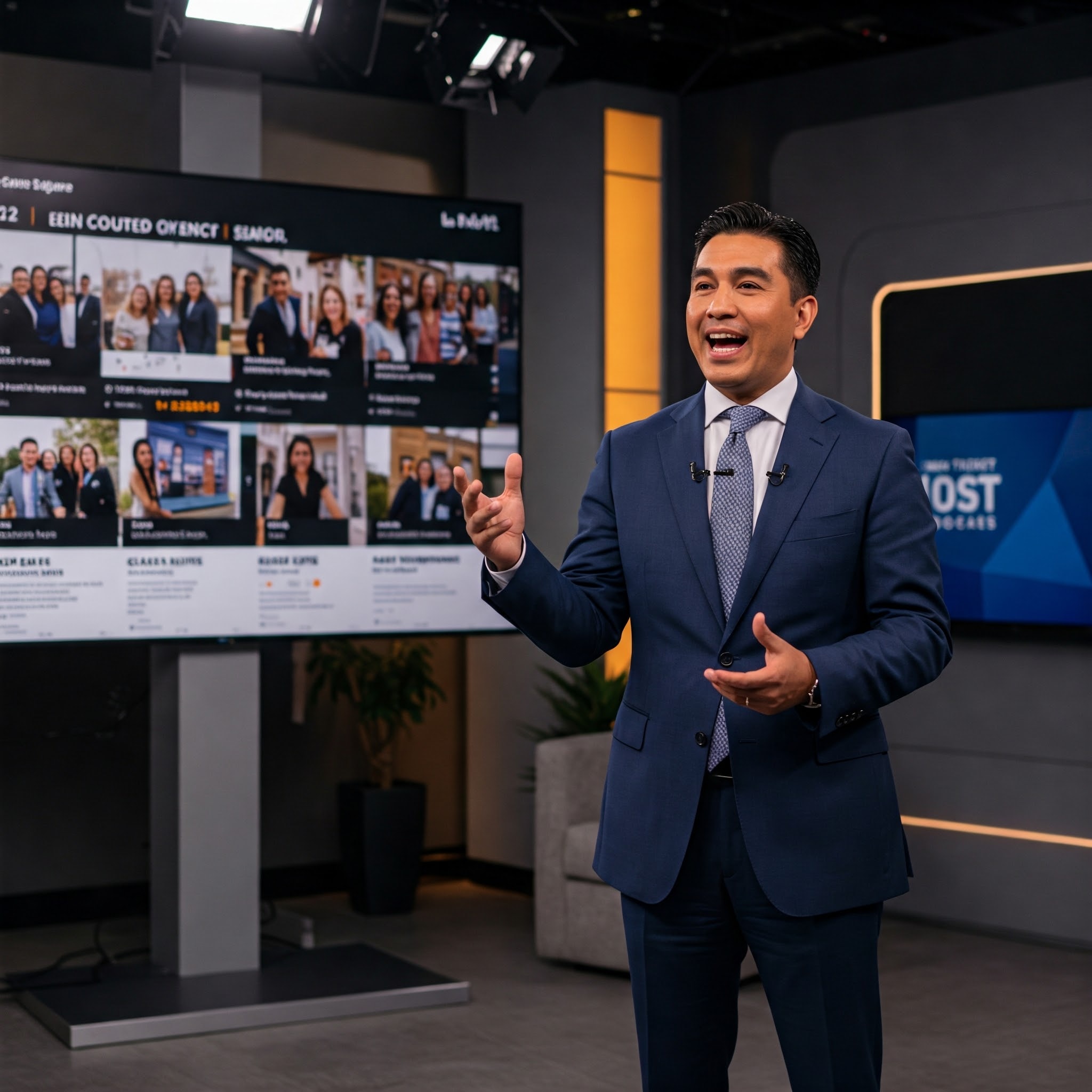
Here’s what to include in your marketing strategy:
Authority Content (Results, Case Studies, Testimonials)
- The best way to remove doubt? Proof.
- Share client results, testimonials, and case studies before the call.
- Example: “This strategy helped my client go from $50K months to $300K months in 90 days.”
Exclusive Positioning (Not Everyone Qualifies)
- Make prospects feel like they need to earn access.
- Example: “This isn’t for everyone. We only work with qualified businesses doing at least $100K/month.”
Clear Pre-Frame (Set Expectations Upfront)
- Prospects should know the price range, the commitment, and who this is for.
- If they still ask, they weren’t paying attention.
By the time they schedule a call, they should already be thinking:
“I need this.”
“How soon can I start?”
How to Create an Inbound System That Pre-Sells for You

If you’re still doing outbound sales, you’re playing the hard game.
Elite high-ticket businesses don’t chase clients. They make clients chase them.
Here’s how to structure your high-ticket sales funnel to pre-sell automatically:
1. Content That Builds Demand → Use social media, blogs, and video to establish yourself as the go-to expert.
2. Lead Qualification → Have an application process that filters out tire-kickers.
3. Pre-Sell Email Sequence → Send case studies, testimonials, and pricing before the call.
4. High-Value Sales Call → By this point, the call is just a formality.
The result?
More inbound leads.
Fewer objections.
Higher close rates.
No convincing. No chasing. Just premium clients ready to buy.
Why Exclusivity Creates More Demand
The harder something is to get, the more valuable it becomes.
High-ticket businesses don’t need everyone. They only need the right buyers.
Here’s how you create exclusivity:
Use an application process. If they don’t meet the criteria, they don’t move forward.
Cap the number of spots. If demand is high, clients act faster.
Make clients prove they’re serious. If someone asks, “Can I get a discount?” your answer should be:
“This offer isn’t for everyone. Maybe it’s not the right fit for you.”
Now, instead of you proving your value, they’re proving why they deserve to work with you.
That’s real positioning.
Let Clients Sell Themselves
When done right, you don’t “sell” on the call.
By the time a prospect gets to you, they should already know:
They need what you offer.
You’re the best at what you do.
They need to act now—or miss out.
That’s real high-ticket selling.
Now that your positioning, pricing, and pre-selling are dialed in, the final step is to close deals without resistance.
Let’s break that down next.
Step 4: Close Without Resistance
The biggest mistake entrepreneurs make in high-ticket sales?
They try to “close” the deal.
If you’re still pushing, convincing, or handling objections, you’re doing it wrong.
High-ticket closers don’t “close” deals. The client closes themselves.
By the time you get to the end of a call, the decision should already be made.
They know they need your offer. They trust you. They see the value.
All you’re doing is confirming the next steps.
Why High-Ticket Sales Should Never Feel Like a “Hard Close”

If you’re still trying to convince someone to buy…
They’re not the right client.
High-ticket clients don’t buy under pressure. They buy when they feel:
Certainty – They know this is the right solution.
Urgency – They see why acting now benefits them.
Exclusivity – They feel like they’re being invited into something premium.
The second they feel “sold to,” the deal is dead.
Your job? Control the frame so they sell themselves.
How to Make Clients Close Themselves
Here’s how to eliminate resistance and make high-value clients eager to commit:
1. Reaffirm the Transformation (Not the Features)
- Wrong: “This coaching includes 12 calls, worksheets, and training videos.”
- Right: “This program will help you add $50K per month to your revenue in 90 days.”
2. Reverse the Risk
- Show them why the bigger risk is NOT moving forward.
- Example: “If you don’t fix this now, where will your business be in 6 months?”
3. Use Strategic Urgency (Not Fake Scarcity)
- Real urgency comes from demand, not gimmicks.
- Example: “We only take 5 new high-ticket clients per month. If you want in, now’s the time.”
When done right, clients make the decision themselves.

How to Handle Final Questions Without Resistance
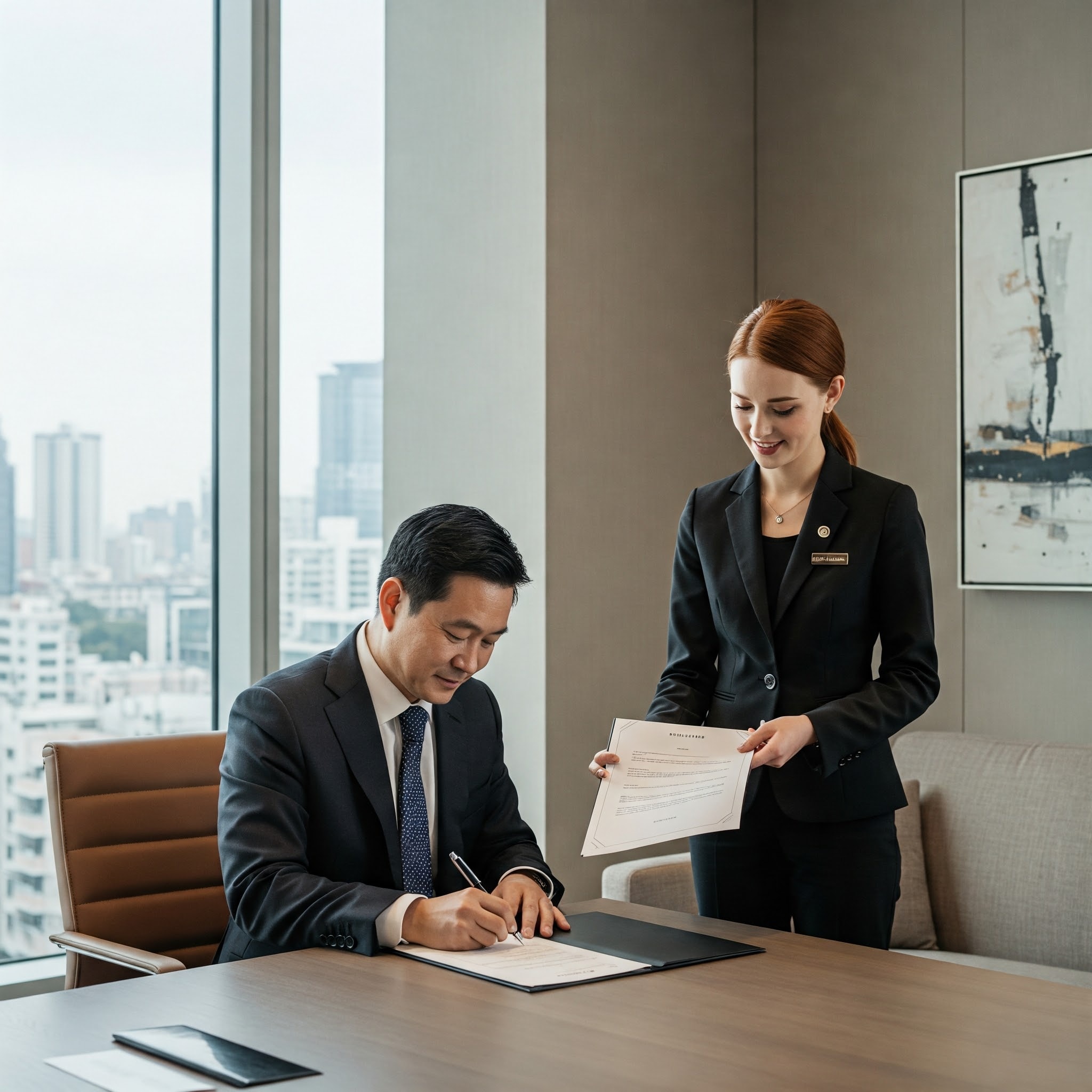
Even with a strong pre-sell process, some clients will want final clarifications.
Here’s how to handle them like a high-ticket closer:
“This is a big investment. I need to think about it.”
Response: “Totally get it. Let me ask—what’s really holding you back? If this isn’t the right fit, I’d rather hear it now.”
“Can I get a discount?”
Response: “This isn’t about cost. It’s about results. If you’re worried about price, this might not be the right for you.”
“I need to talk to my spouse/business partner.”
Response: “Of course. What do you think they’ll say? What questions do they have that I can help you answer?”
The goal? Keep control of the conversation.
By asking the right questions, you uncover the truth and guide them to a confident decision.
Why FOMO Is the Most Powerful Closing Tool

People act when they feel they might miss out.
If a client feels like they can come back anytime, they won’t take action.
Here’s how to create natural urgency that drives action:
Limited spots → “We only take 5 clients per month.”
Rising demand → “We have a waitlist, so I can’t guarantee availability next month.”
Client success stories → “Clients who commit now are already seeing results.”
When clients feel like they need to act NOW, they do.
Final Thought: The Close Should Feel Like a Natural Next Step

When you’ve done everything right—positioning, price anchoring, pre-selling—there’s no “close.”
By the time a client reaches the final decision, they should be thinking:
“I need this.”
“This is the right time.”
“I don’t want to miss this opportunity.”
And when they say “I’m in”, it should feel like the most obvious and natural next step.
That’s how you close high-ticket deals without resistance.
Now, let’s wrap up with the final key takeaways and next steps.
Takeaways & Next Steps
If you’ve been struggling with high-ticket sales, it’s because you’re playing by the wrong rules.
Most entrepreneurs chase clients.
High-ticket closers position themselves as the prize.
Most sales reps handle objections.
High-ticket businesses eliminate objections before they happen.
Most people sell based on price.
High-ticket sellers anchor value so price feels irrelevant.
When you understand these principles, closing high-value deals becomes effortless.

Want to Scale High-Ticket Sales Without Chasing Leads?
If you’re ready to attract premium clients and scale high-ticket sales the smart way…
Join us inside S.M.A.R.T. and discover how to position yourself as the only logical choice.
Don’t wait. The best clients don’t hesitate—neither should you.
